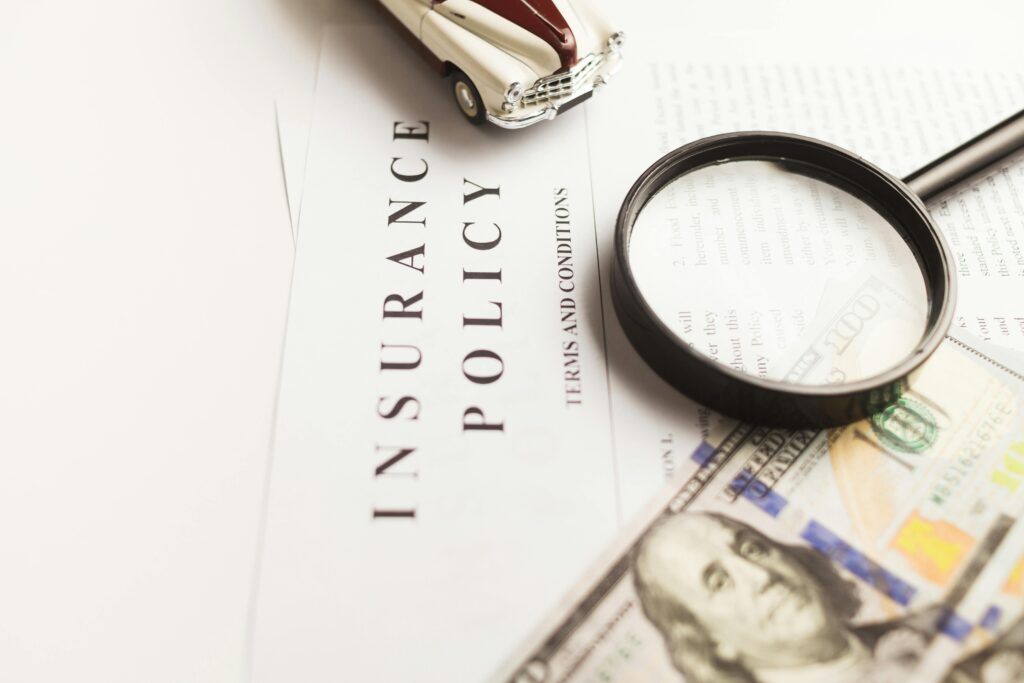Now Reading: How VIN Removal Can Simplify the Process of Registering a Classic Car
-
01
How VIN Removal Can Simplify the Process of Registering a Classic Car

How VIN Removal Can Simplify the Process of Registering a Classic Car
Registering a historic automobile might be difficult, particularly with modified or absent VINs. This post looks at how VIN reassignment and correction could streamline historic automobile registration. We’ll go over typical VIN problems with older vehicles, how they affect registration, and doable actions to simplify the process with Stat VIN. Whether you are purchasing a classic or repairing one, knowing how to manage VIN-related issues can simplify registration.
Introduction: The Challenges of Registering a Classic Car
Registering a vintage automobile may be a difficult procedure full of particular difficulties. Some of the main concerns are shown here:
- Varying regulations. Varied states or countries have varied definitions and criteria for classic automobile registration policies. Since rules vary greatly, compliance calls for extensive study;
- Documentation issues. Classic automobiles frequently include inadequate or obsolete paperwork, such as non-standard VIN number or missing titles. Getting the required documents may be difficult and time-consuming;
- Vehicle condition. Classic automobiles may not satisfy contemporary safety and pollution criteria, hence expensive inspections or modifications are needed to follow modern guidelines;
- Historic vs. modern standards. Preserving the authenticity of a historic automobile while nevertheless fulfilling modern safety and emissions requirements may be challenging;
- Insurance and valuation. Determining a fair valuation may be difficult. Insuring a vintage automobile calls for specific insurance reflecting its worth and historical importance;
- Specialized knowledge. The registration procedure often calls for knowledge that regular registrars may not possess, hence historic vehicle clubs or specialized advice is advised;
- Changing regulations. Changing rules for vintage automobiles might complicate maintaining compliance and keeping the car lawfully registered.
The Role of VIN in Classic Car Registration
Crucially important for registering historic automobiles, the Vehicle Identification Number has multiple purposes.
- Unique identification. The manufacturer assigns a unique code called the VIN history to every car, which functions as its fingerprint. It offers a clear approach to mark the automobile out from others and identify it.
- Car history. Access the history of the car including past owners, accident data, and repair and maintenance notes using the VIN. This material helps one to grasp the state of the automobile and any problems.
- Title and registration. Transmitting ownership and registering the automobile depends on the VIN. It relates to the title and registration records of the car as it offers evidence of legal status and ownership history.
- Insurance. The vehicle identified for insurance needs the VIN. It lets insurance firms evaluate risk, check the car’s specifics, and decide on suitable coverage.
- Theft recovery. Should a historic automobile be stolen, law enforcement’s tracking and recovery process depends critically on the VIN. It helps one locate the car and identify it.
- Parts and repairs. Correct components and accessories for the vehicle may be ordered using the VIN, therefore guaranteeing fit and compatibility. It also lets technicians spot certain models and features for maintenance and repairs.
Common Issues with VINs in Classic Vehicles
Verifying the validity and background of vintage automobiles depends critically on VINs. When it comes to VINs, historic automobiles do, however, present some special problems. These problems could vary from mismatched VINs from repairs or restoration to missing or damaged VIN plates. Knowing these typical issues will let buyers, restorers, and collectors negotiate the complexity of vintage automobile ownership and guarantee that they are working with a real, fairly used car.
Missing or Damaged VIN Plates
The absent or damaged VIN plate is one of the most common problems with vintage cars. VIN plates may fade with time from environmental exposure or inadvertent harm. Sometimes these plates could be lost via other methods or removed during restoration projects. Verifying the identification, history, and uniqueness of the vehicle might therefore present major difficulties. Restoring or replacing lost or damaged VIN plates usually calls for certain knowledge and experience to keep the car original while doing so.
Mismatched VINs Due to Restoration or Repairs
Mismatched VINs arising from restoration or repairs are another frequent problem with vintage cars. Different pieces of a historic car may be changed or rebuilt throughout the restoration process, hence occasionally the VIN may vary. For instance, if big parts like the engine or chassis are replaced, their VINs may change from those initially connected with the vehicle. When one is confirming the validity and history of the automobile, this might lead to uncertainty and difficulties.
Mismatched VINs might compromise the legal status and worth of the vehicle, hence owners and any purchasers should carefully look at any differences. To prevent such problems, restoration firms and fans must be exact about recording and preserving precise car history data. Maintaining the integrity of the vehicle and guaranteeing that its historical value is not damaged depends on thorough monitoring of VINs throughout repairs and restoration and appropriate treatment of them.
How VIN Removal Can Streamline the Registration Process
Simplifying the registration procedure for historic cars might depend much on VIN removal and replacement. Effective resolution of VIN issues, such as illegibility, mismatches, or fraud, allows a more seamless and efficient registration process. Eliminating and changing VINs will assist in simplifying the procedure:
- Simplifies verification. Eliminating a troublesome or unreadable VIN plate and substituting a standardized and clear VIN can help with verification. This guarantees that the vehicle’s identification fits official records and is readily verified.
- Avoids mismatches. Eliminating mismatched or changed VINs and substituting a suitable, consistent one helps to lower the possibility of registering records being different. This helps to avoid delays in ownership and authenticity-related difficulties.
- Enhances compliance. Sometimes, particularly when repairing or rebuilding vintage vehicles, removing and replacing VIN plates helps to guarantee that the automobile conforms with contemporary rules and requirements. This simplifies and smooths out the registration procedure.
- Resolves documentation issues. Changing a car with a new, consistent VIN will assist in overcoming problems with missing or damaged VIN plates, therefore simplifying the documentation procedure and guaranteeing correct records.
- Prevents fraud. By substituting a clear VIN history for a possibly fraudulent or manipulated one, problems with stolen or misrepresented automobiles are avoided, therefore strengthening the security and efficiency of the registration process.
Legal Considerations: Ensuring Compliance During VIN Removal
Legal and pragmatic reasons usually prevent VIN removal, although sometimes it may be required in circumstances of extreme damage or repair. Even in these cases, nevertheless, it is essential to act with great care and guarantee thorough local legal compliance
Important legal considerations:
- State and Federal Laws. The jurisdictional legality of VIN removal differs. Certain states could have particular legislation controlling the replacement, modification, or removal of VINs. Research and knowledge of your state’s legislation as well as any relevant federal rules is very crucial.
- Documentation. It is essential to keep thorough records of the procedure should VIN removal be decided upon. These comprise:
- Reasons for elimination;
- Elimination date;
- Removal location;
- Name and phone details of the person removing it;
- Any supporting material, like images or witness quotes.
- Expert Assistance. It is highly advised to include a trained automobile expert or restoration professional knowledgeable of VIN rules and practices. They may assist in guaranteeing proper and lawful performance of the removal.
- Reporting to Authorities. Sometimes it might be required to notify local authorities, including the Department of Motor Vehicles (DMV), of the clean VIN history. Your location and the circumstances surrounding the removal will affect the particular criteria for reporting.
Tips for Successfully Registering a Classic Car After VIN Removal
Registration of a classic automobile after VIN code removal may be a difficult and demanding procedure. It calls for extensive preparation, exhaustive documentation, and a strong awareness of local rules. These pointers could help you raise your chances of success:
1. Verify local regulations
Investigate and learn the particular local rules regarding VIN removal and replacement in your country. A good registration depends on one following these guidelines.
2. Secure proper documentation
Get and ready all required documentation: records of the removal and replacement procedure, proof of ownership, permission for VIN changes, etc. Good paperwork supports the validation of the vehicle’s identification and background.
3. Consult with authorities
Before implementing any modifications, check with local motor vehicle authorities or departments to verify the right processes and get any necessary permissions or approvals.
4. Use professional services
Engage specialists or specialized services for VIN removal and replacement to guarantee that the operation is carried out properly and in line with legal criteria.
5. Update vehicle records
Once the VIN replacement is complete, quickly update all pertinent records, including registration, insurance, and vehicle history reports, to represent the new VIN.
6. Inspect for compliance
Verify whether the new VIN plate satisfies all legal and regulatory criteria and is correctly installed. To verify conformity, one can call for an inspection.
7. Keep detailed records
Maintaining comprehensive records of the VIN removal and replacement procedure, including with documentation of the new VIN, and evidence of compliance, keep careful notes of any communication with authorities.
8. Be prepared for verification
Get ready for further verification or inspections authorities may call for to validate the vehicle’s compliance with laws and authenticity.
Registering a classic automobile after VIN removal is a difficult procedure, requiring careful preparation and meticulous attention to detail. Following these guidelines and consulting professionals will help you raise your chances of finishing the registration procedure satisfactorily.










